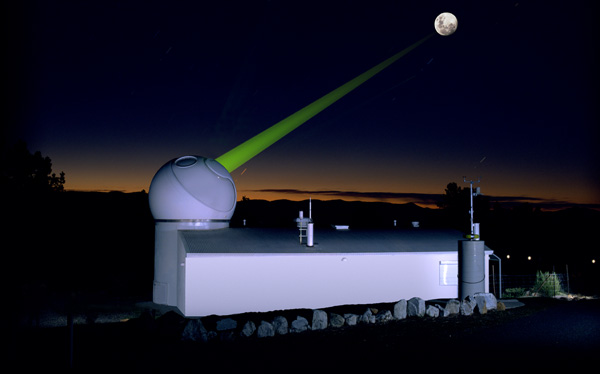Aussie lasers stop satellite collisions, death

An Australian company is developing a laser tracking system that will help prevent collisions between satellites and space debris, thanks to a $4 million grant from the Federal Government.

Electro Optic Systems' Mount Stromlo observatory
(Credit: Electro Optic Systems)
Electro Optic Systems has been building laser tracking systems for just over 20 years, chief executive officer Craig Smith told ZDNet Australia in a telephone interview yesterday.
The laser tracking systems have been used to track satellites, but now the company hopes to market a new product to satellite owners and space explorers, which will help track space debris.
According to Smith, space debris is lethal to satellites and explorers of space because it can collide with them. If space debris collides with an astronaut it could ultimately kill them.
"The trouble is it's in orbit and travelling at orbital speeds, which means that it is travelling at about 30,000 kilometres an hour. If even a tiny little piece runs into a satellite it'll destroy it or punch a hole through a person if they're out there space walking," Smith said.
"It's becoming a hazard to navigation in the use of particularly low-earth orbit space."
Space debris is essentially space junk left by humans in our exploration of space, according to Smith. It can include dead satellites and miscellaneous debris that has fallen off rockets.
Electro Optic Systems' laser technology, with the help of a federal government grant, will enable the Mount Stromlo observatory in Canberra to track space junk and sell the data it collects to satellite owners and companies like NASA.
"So the intention is to provide data as a fee for service," Smith said.
Those using the data will then be able to use it to move satellites or astronauts to safety.
In the case of satellites, owners are forever moving satellites for "no reason" and using up fuel, according to Smith. Having the ability to track debris accurately using lasers and not radar technology, which is currently in use, will save time and money.
"It's still a manually operated system, so this grant will transition us to commercial operation and automate that whole system so it can actually run unattended," Smith said.
"If we have to have people operating the system all of the time, then it's not really an affordable service, so by automating it and making it sort of faster to operate you get throughput and then the intent is to expand the capabilities so that we have a sort of global network and either sell systems to people and/or sell data as a service."
The company itself and its partners the Australian National University, Defence Science and Technology Organisation, and US company Global Navigation Service, will also contribute another $4 million on top of the government's grant, taking the project to $8 million.
Unfortunately, the lasers won't blast junk out of the sky.
"At the moment it doesn't get rid of it," Smith said. "What it does allow is for us to track the orbits very accurately, and if we have accurate orbit determination then you can determine whether you're going to run into space debris."